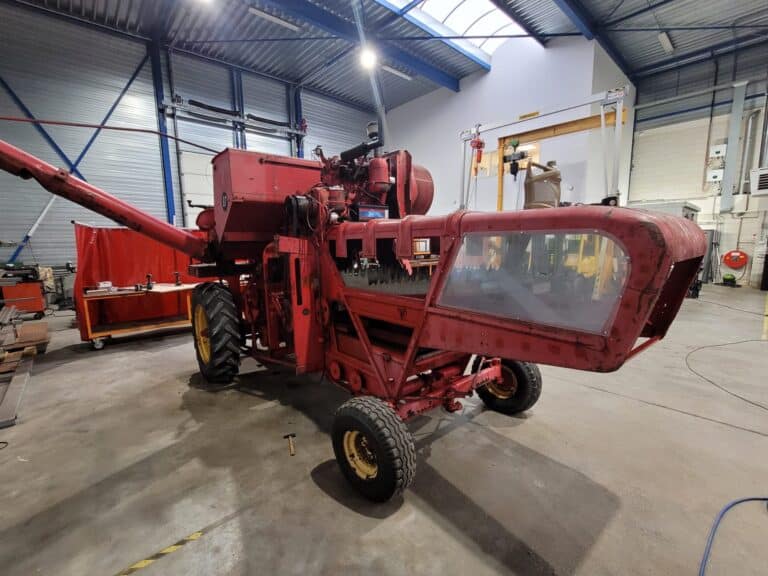Niels Hamming: 21 years (left picture)
Study: werktuigbouwkunde Hanzehogeschool
Mike Mohlmann: 25 years (right picture)
Study: werktuigbouwkunde Hanzehogeschool

What was the exact internship assignment?
Converting an old Massey Ferguson 87 combine into a ready-to-use Promotional Combine for educational and presentation purposes. The ultimate goal of this project was to demonstrate the functionality of the combine in a clear and visually appealing manner. The result, a fully operational Promotional Combine. This combine had to be prepared for transport to events, exhibitions, or schools, to provide clear explanations of the function and operation of a combine.
What were the tasks?
Niels: Together with Mike Möhlmann, we worked on the old Massey Ferguson 87 combine from 1966. It was a super cool project because there was a variety of tasks, from office work, planning, and budgeting to working on the machine itself in the workshop. I appreciated the independence and responsibility we were given for this project, which allowed us to successfully complete the project in our own way.
The initial idea was to cut the combine in half to reveal the interior. However, this would have compromised many functionalities. We adjusted the idea so that the machine could remain operational, with all the important components visible and functioning through plexiglass. The work was carried out in phases:
- Phase 1: Disassembling wheels, fixing brakes, and repairing the motor.
- Phase 2: Removing the visibility panels, followed by designing new panels in SolidWorks.
- Phase 3: Assembly, mounting plexiglass panels, and repairing the paint.
Mike: The collaboration with Niels Hamming went smoothly; I already knew Niels a bit from the course. Niels is a real go-getter and has a good understanding of what he’s doing. Together, we had to carefully consider our actions to come up with the best solutions.